Summer in Australia has become the traditional period of peak demand for electricity. The main reason for this is the increased use of air conditioners over the past two decades. Three out of every four Australian household currently has a refrigerated air conditioner or an evaporative cooler. This is almost double the rate of ownership back in the late 1990s. The main exception is Tasmania with its cooler winters and milder summers.
The cumulative effect of all these air conditioners working hard at the same time translates into big surges in electricity demand as households and businesses stay cool. With the Bureau of Meteorology forecasting the current El Nino to be significant with some major heatwave events, peak demand is expected to occur during summer. But do high temperatures still lead to ever higher peak demand, particularly when we consider other factors, such as industrial demand and the growth of rooftop PV which have had an impact on demand levels?
What is the impact on electricity demand of several extremely hot days in a row?
Demand for electricity increases and decreases significantly at different times every day of every week. The normal daily ‘peaks’ of electricity demand come at breakfast and dinner times, with demand falling to very low levels overnight and being low on weekends and during holiday periods. Record peaks on mainland Australia typically occur in summer on weekday afternoons and are caused by increased residential and commercial air conditioner use over and above ongoing industrial load.
The most intense recent heatwaves – periods of extended high temperatures – across Australia have occurred in South Australia and Victoria. In January 2009 a four-day heat wave with maximum temperatures above 40 degrees Celsius set new demand records in both states. These records were nearly matched in a similarly intense heat wave in January 2014.
The cumulative heat that builds up with consecutive days of very high temperatures increases air conditioner use and significantly drives up demand for electricity. How hard an air conditioner is working is directly related to the temperature outside. So it is no surprise that heatwaves lead to large spikes in electricity demand.
Looking at the data from heatwaves dating back to 2009, we have noticed that peak electricity demand tends to increase slightly every consecutive day during a major heat wave. This makes sense, as buildings tend to accumulate heat, and air conditioners need to work progressively harder each day to achieve the same temperatures.
For example, looking at two separate peak demand periods in South Australia and Victoria over the heatwaves in 2009 and 2014, we can see the demand increase both with the temperature rising and the duration of the heatwave.
Figure 1: Victorian Peak demand and temperature, 25-30th of January, 2009
Figure 2: South Australian Peak demand and temperature, 25-29th of January, 2009
Figure 3: Victorian Peak demand and temperature, 25-29th of January, 2014
Figure 4: South Australian Peak demand and temperature, 12-17th of January, 2014
What is driving this increased electricity demand?
The number one driver of increased electricity demand during heatwaves is air conditioners. Household air conditioners were once a luxury. Now, they are a standard appliance in most Australian homes. In 1999, only 35 per cent of Australian households owned an air conditioner. Today, around 74 per cent of all homes have at least one air conditionerand an increasing proportion of households now have multiple units.
In 2011, nearly 600,000 households had three or more units. That’s more than 9.2 million installed air conditioners, more than three times as many as in 1995. Figure 5 shows the proportion of Australian households with air conditioners increasing over time.
Figure 5: Proportion of Australian Households with air conditioners 1990-2014
Having these air conditioners turned on simultaneously puts a huge strain on our electricity networks. Around 25 per cent of all investment by network companies has been to build extra capacity into the grid for these handful of very hot days each year.
When is the next heatwave expected?
The short answer is: This summer. Australia’s Bureau of Meteorology (BOM) recently warned the current El Nino event is expected to be significant and continue well into next year.
The BOM is expecting on average higher maximum temperatures as a result of the El Nino. Melbourne had its hottest maximum early in October, with 34.4 degrees, only to set a new mark just a day later with 35.8 degrees. In its media release on November 10, the BOM has predicted warmer than average maximums over much of south-western and eastern Australia. Figure 6 shows that the capital cities (which are the major load centres for electricity) most likely to experience above median maximum temperature are Sydney and Perth (75 per cent) followed by Brisbane and Adelaide (60 per cent).
Figure 6: Temperature – The chance of above median maximum temperature for November to January
How does solar PV impact demand during heatwaves?
The amount of electricity generated by solar systems has increased significantly since 2006. Generous up-front subsidies and feed-in tariffs have acted as catalysts to the sharp rise in the uptake of solar panels. The latest figures from the Clean Energy Regulator show that we now have almost 4,000 MW of solar capacity across Australia. To put this into perspective, the largest power station in Australia is Eraring power station in NSW at 2,780 MW, although Eraring’s annual output still exceeds solar output due to its higher capacity factor.
With rooftop solar systems behind the meter, it’s only possible to estimate how much they are generating (as some of the electricity generated is used directly by the household).
During the 2014 heatwave solar generation was estimated to account for 4.5 per cent of generation during the time of peak demand in SA and 2.4 per cent in Victoria. In both cases, this represented under 50 per cent of installed capacity.
This means total peak electricity demand in both states was almost certainly significantly higher in January 2014 than the all-time record, but the effect of increased penetration of solar was to keep demand below the levels of demand set in 2009.
South Australia boasts the highest penetration rate of solar panels in Australia; a quarter of SA homes now have solar. The recent increase in solar panel installations continues to decrease demand during daylight hours. This has the effect of pushing the peak demand time deeper into the evening (as the sun sets, solar systems reduce output). The 2013-14 peak demand in South Australia occurred at 7 PM.
In Queensland, despite solar PV connections continuing to grow more slowly, peak demand is occurring in the early evening. Energex anticipates that the summer peak demand will occur at 6.30 pm by about 2020.
Significant changes in industrial demand
The chances of NSW and Victoria breaking any electricity demand records have diminished in the last few years. Total demand for electricity has reduced since 2009, primarily as a result of falling industrial demand from the closure of large industrial facilities like aluminium smelters, steel production and car factories. The closure of the Kurri Kurri aluminium smelter in NSW caused a sharp decline in large industrial consumption from 2011- 2012 to 2012-2013, while the closure of the Point Henry aluminium smelter in Victoria partly led to the closure of the Anglesea power plant after it supplied about 40 per cent of the power for Point Henry aluminium smelter.
In contrast, LNG projects coming online and CSG extraction are progressively adding more to Queensland’s base demand. According to the 2015 AEMO National Electricity Forecasting report (NEFR) LNG projects reach operational capacity in 2017-18 and as a result their consumption plateaus in the medium-term.
Underlying population growth
There are other underlying factors such as population growth that could also have an impact. In the 2015 NEFR forecasts shows that population growth is a key driver for any increase in consumption across residential and commercial customers. According to the ABS, the population across NEM states has been increasing at an average of 1.1 per cent.
Where to now?
On 20 November 2015, Sydney experienced its second hottest November day on record with temperatures reaching 40.9 Celsius at 3:05pm, as a heatwave hit much of NSW following three consecutive days over 30 degrees. Demand on that day reached 12,667 MW which is highest demand for the 2015 calendar year and current peak demand for 2015-16.
Queensland appears more likely though to reach a peak demand record than any other state. Last summer, Queensland had a network peak record for a Saturday. Demand reached 8,300 MW, which was only 600MW short of the all-time record for working weekdays. To the extent this indicates some underlying peak demand growth, plus the contribution of the CSG to LNG industry, a run of a few hot weekdays in Brisbane could result in a new record.
Questions:
Any questions about the report should be addressed to Panos Priftakis (panos.priftakis “at” esaa.com.au).
About our Guest Author
|
|
Panos Priftakis is a Policy Analyst with the Energy Supply Association of Australia.
Panos is an experienced economist with well-developed policy analysis, research and report writing skills. In his role with industry peak body the Energy Supply Association of Australia, he monitors and advises on economic, political and regulatory developments impacting the sector and develop robust policy positions to promote the long-term sustainability of our electricity and gas supplies. Amongst other responsibilities, Panos is involved in the development of esaa’s annual statistical publication – Electricity Gas Australia. You can find Panos on LinkedIn here. |
Editor’s Note
These thoughts from Panos might help entrants seeking to make final entries (closes this Friday 27th Nov) in the WattClarity Peak Demand Forecaster Competition for summer 2015-16.
Australian Bureau of Statistics (ABS), 2014, “4602.0.55.001 – Environmental Issues: Energy Use and Conservation, Mar 2014”
Source: NEM-Review
Source: NEM-Review
Source: NEM-Review
Source: NEM-Review
ABC, 2015, “Weather bureau warns El Nino on track to hit record levels by Christmas”
Source: Bureau of Meteorology, 2015, << http://www.bom.gov.au/climate/outlooks/#/temperature/maximum/median/seasonal/0 >>
esaa, January 2015 “Heatwave and electricity supply”
Energex, 2015, “Energex Distribution Annual Planning Report”
The Age, 2015, “Alcoa to shut Anglesea coal mine and power plant”
Australian Energy Market Operator’s (AEMO), June 2015, “2015 National Electricity Forecasting report”
[xiv] Source: Australian Energy Market Operator’s (AEMO)
Australian Bureau of Statistics (ABS), 3101.0 – Australian Demographic Statistics
McArdle, P, January 2014, “Record Saturday demand reached in Queensland”


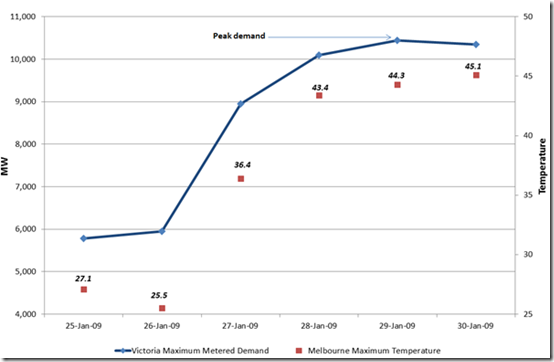
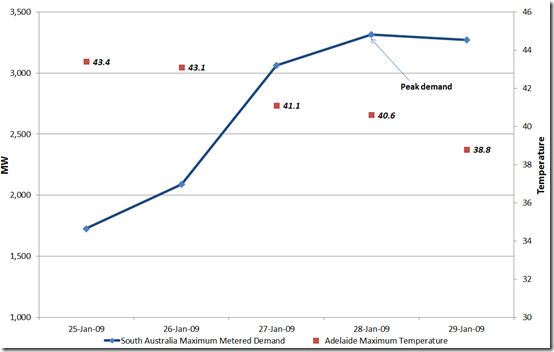
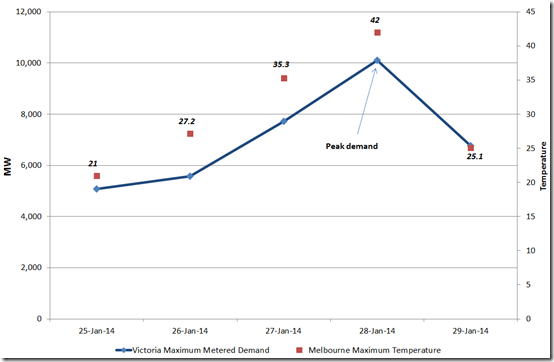
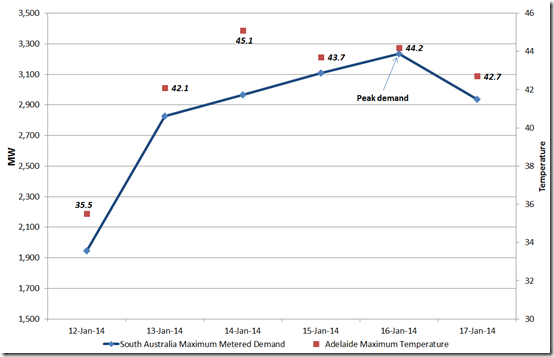
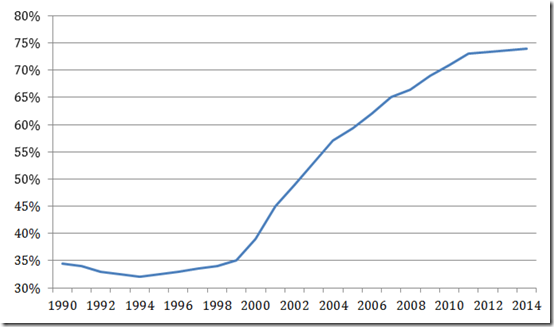
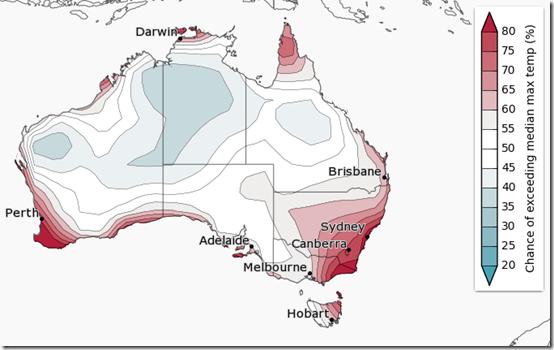

Leave a comment